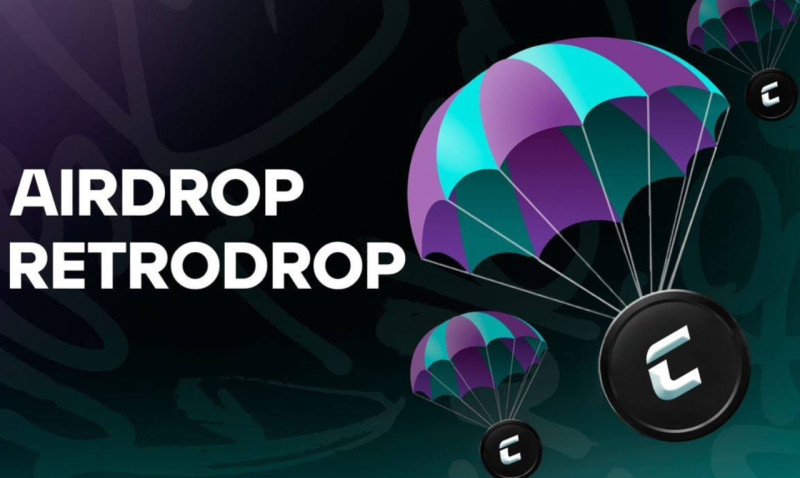
Crypto retrodrops are methods of distributing tokens among current investors and active participants of a crypto project.
Before launching their project, creators face two key tasks: how to attract investment and how to expand their user base. Previously, these issues were resolved through token sales.
Learn more about “What is crypto?”
Regardless of what they were called (ICO, IDO, or IEO), the essence still remained the same: the initial sale of tokens through whitelists and allocation distribution.
Token sales served two purposes simultaneously: they attracted capital into the project and simultaneously helped create a user community. However, with the emergence of the United States Securities and Exchange Commission (SEC), the situation changed. The SEC stated that both private and public token sales may be regarded as securities sales.
Although cryptocurrencies by their nature are not securities, if they were to be classified as such, projects would face the need to undergo a complex registration process, issue offering prospectuses, and list tokens on exchanges as traditional securities. This would inevitably lead to legal restrictions and numerous inspections.
Projects that have already violated these rules risk coming under the close scrutiny of regulators. If tokens are recognized as securities but are not registered as such, the project may face large fines or even closure, which could greatly affect its future.
Despite the absence of clear regulatory rules, crypto projects seek to avoid potential legal problems. The examples of Pavel Durov and Tornado Cash serve as reminders of the possible consequences of conflicts with regulators. If a project loses in court, it may be obliged to pay enormous fines or even be banned from operating in the United States.
For large projects such as Binance, which possess significant financial reserves, such fines may be manageable. However, for projects with a market capitalization of around 500 million dollars, a fine of 300–400 million dollars could be fatal.
In order not to attract the attention of the SEC, project founders began to move away from token sales as a way of raising funds. If a project is truly promising, it can receive investment from funds without the need to raise money from the community.
To attract new users, retrodrops, testnets, and other activities come to the rescue.
In this article, we will look deeper into the concept of retrodrops, discuss why projects distribute tokens, and explain how you can get your share.
Concept of retrodrops
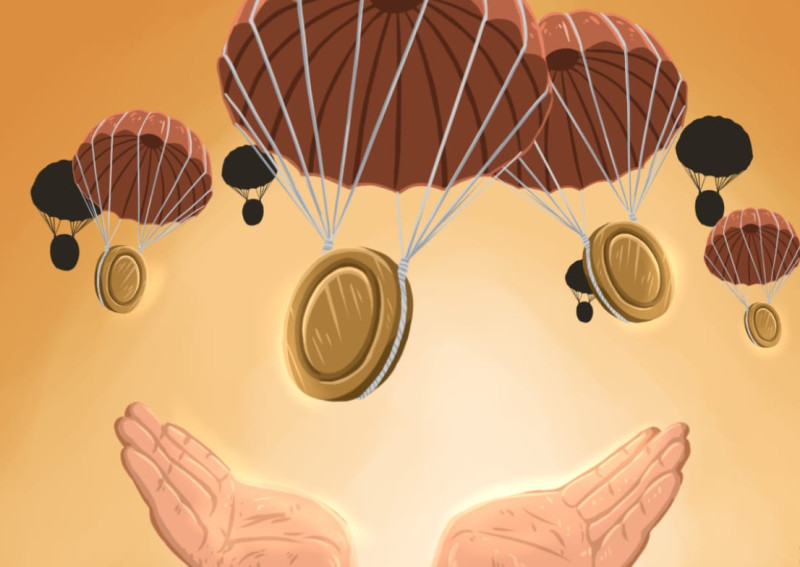
A retrodrop is the process of free token distribution among users who actively interacted with a project during its early stages.
Such giveaways are organized by many projects, and the types of activities for which users receive rewards depend on the specifics of the platform. For example, exchanges and NFT marketplaces reward trading activity, blockchains reward interaction with the network, and Play-to-Earn (P2E) projects reward participation in gameplay.
Let us consider the main reasons why projects carry out crypto retrodrops:
| Increasing project awareness | Loyal users rewarding |
First, increasing project awareness. Every project critically needs to attract attention in order to expand its user base.
The announcement of a retrodrop often triggers a surge of interest and active discussion within the community, serving as a powerful marketing tool.
For example, the Aptos project announced the distribution of 20,070,150 APT, which on 19 October 2022 was valued at 148.5 million US dollars, naturally generating massive hype at the time. This distribution involved 110,235 participants.
Users who took part in the testnet received 300 APT each (equivalent to 2,200 US dollars), while those who minted an NFT received 150 APT (1,100 US dollars).
Second, rewarding loyal users. Large projects that have not yet released their tokens are often interested in enabling their most active users to participate in project governance through governance tokens and to maintain their commitment to the platform.
For investors, this step shows that the project is people-oriented and seeks to consider their opinions, increasing its attractiveness in the eyes of users. For network participants, token distribution strengthens trust in the project and confirms that their contribution is valued.
In recent years, retrodrops have become so popular that a group of people has emerged who specialize in this activity, known as retrohunters. However, they are not interested in long-term involvement in the project’s life — their main goal is simply to imitate activity within the project in order to ultimately profit from it.
Why do projects give away tokens?
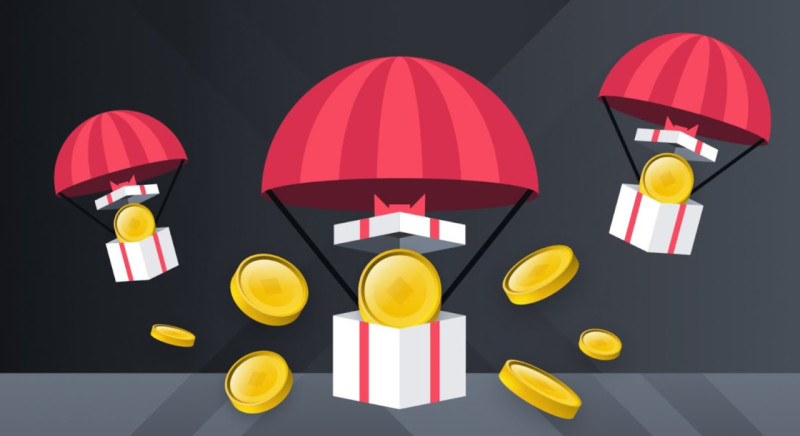
comes from, and why they are willing to engage in such “generosity.”
Many mistakenly believe that projects spend their own money on giveaways and that the token price directly depends on this. But then a question naturally arises: how was the Arbitrum project able to distribute tokens worth more than one billion dollars with investments of only 100 million?
The answer is very simple: projects give away their own tokens, which in themselves are worth nothing and are valued only by the market.
For a successful launch, a project needs more than just issuing tokens: a well-thought-out community reward strategy, effective marketing, and, of course, a quality product (although this is not always the case).
Of course, projects also work with market makers, but even they cannot fully control the market chart. The topic of market makers’ work deserves a separate discussion, so we will not go into details for now.
Let us look at several reasons why projects choose crypto retrodrops as a way to distribute tokens and enter the market:
• Hype
This point is obvious — many of us entered the world of retrodrops precisely because of the buzz around previous giveaways.
• Legitimacy
Amid growing pressure from regulators and the SEC, especially during a bear market, older projects are increasingly being recognized as securities. To avoid violating regulatory requirements, more and more new projects prefer to distribute tokens through airdrops, as this is not considered a token sale and does not lead to their classification as securities.
• Decentralization
Thanks to airdrops, tokens are distributed among a large number of addresses, which contributes to the real decentralization of the project, thus providing access to tokens for users all over the world.
• Community loyalty
Successful token giveaways reward those who supported the project in its early stages, motivating them to continue using the product and attracting more new users. Conversely, unsuccessful giveaways can seriously damage the project’s reputation and drive away potential participants.
How not to miss drop
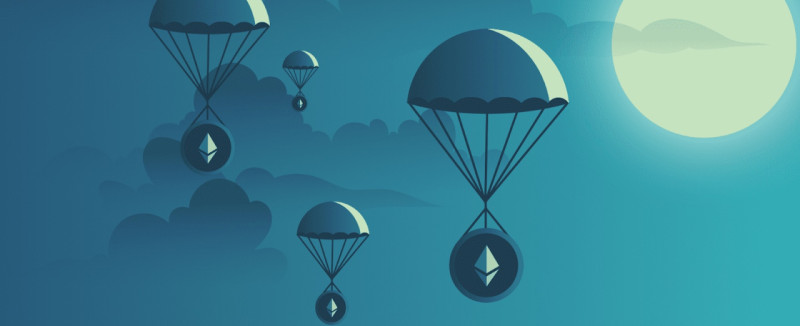
attention to top-tier initiatives.
Every newcomer to cryptocurrency has sooner or later faced the question: “Where should I start, and which project should I focus on?” Most people drop out precisely at this stage because, without the necessary knowledge and experience, many begin to spread their attention across projects that are not worth the time.
Here are the main criteria for evaluating any project on which you intend to spend your resources.
First: study the project’s Twitter account. This is perhaps the first and most important step when getting acquainted with a crypto project. Most projects have a Twitter account that can reveal a great deal about them.
Through this social network, you can learn a lot:
| Basic information | presented in the profile header |
| Followers | an important indicator. By the number and quality of followers, including influencers, funds, or other projects, you can gauge how interested major players are in supporting and potentially funding the project |
| Activity | announcements of events and other activities in which you can participate, always reflected in the account’s feed. |
Another important indicator is investment from funds, meaning the amount of raised capital, which directly influences the potential size of the drop. In most cases, you should focus only on projects that have attracted significant investments.
In addition to the total amount, it is important to note which funds participated in the investment. Funds differ in their tiers, which are based on the success of their previous investments.
An even more important criterion is the project’s valuation. For example, Arbitrum, with $100 million in investments, was valued at $1.5 billion and later conducted one of the largest giveaways. Investments should always be assessed in combination with other factors.
The token is the key element that determines almost all of your potential profit. If there is no token, there will be no income. Therefore, before starting work, it is crucial to learn as much as possible about the project’s tokenomics. If information is lacking or insufficient, look for details about the team’s plans to launch its own token.
To do this, you should check the project’s Discord and ask administrators or moderators about cryptocurrency release plans. You might not get a direct answer, or you might be told briefly that no token is planned. However, remember that such developer forecasts do not always come true; under favorable conditions, the team often changes its plans.
Study the documentation on the project’s website, especially the section dedicated to tokenomics (if available). Also, pay attention to the roadmap, where you can often find information about plans to release a token.
The ecosystem is a network of projects that support the main project or operate on its basis. Always pay attention to large projects in this ecosystem, as participation in them may give you a chance to receive a drop from the main project.
Always remember: in your work, you should primarily apply critical thinking and trust only your own research. This is perhaps the main rule of every crypto enthusiast — or DYOR (Do Your Own Research).
How to get drop
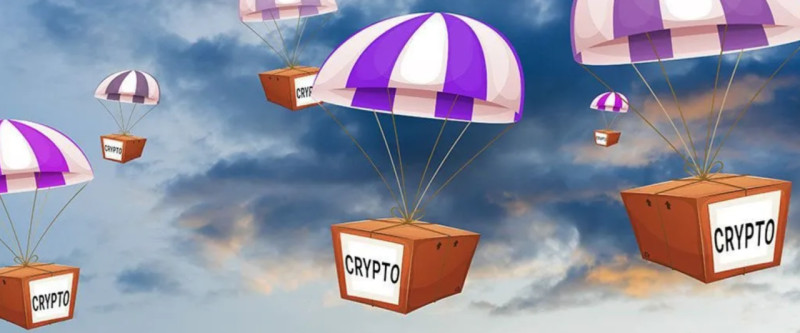
When you have already decided on the project, your next question will be: “What needs to be done next?” Let us highlight the key points to which you should pay attention.
1. Bridges
These are tools that exist in every ecosystem and allow you to transfer tokens from one network to another. The use of bridges is considered an important on-chain action. Each ecosystem has an official bridge that requires special attention. We recommend that you perform both a deposit and a withdrawal through it at least once, as this is often a basic requirement for participation in drops and can sometimes even serve as a reward multiplier.
2. Swaps
This is the process of exchanging one token for another. Such operations can often be carried out on the same platforms where bridges are used. Swaps help increase the number of transactions within the network, and the more transactions you have, the better it is for your activity.
3. Adding liquidity
This is an action that leaves a significant footprint on the blockchain. Choose a dApp carefully and give preference only to verified solutions in order to minimize the risk of losing tokens due to hacking or theft. When selecting a dApp, pay attention to the TVL (Total Value Locked) indicator – the higher this indicator is, the safer the platform is.
4. Social activities
Interacting with the project's social networks plays an important role. Subscribe to the project's Discord and Twitter accounts to stay informed about all the latest news. Participation in key events and obtaining special roles for this can also bring rewards. For example, in the Sui project, active participants in the Discord channel could earn up to USD 1,200 for their engagement.
5. Interaction with marketplaces
This can include purchasing, selling, or creating NFTs. By participating in such activities, you engage additional protocols and expand your experience with various transactions – all of this will have a positive effect on your participation in the project.
All the above-mentioned actions will help you participate in the chosen project as effectively as possible and increase your chances of receiving drops and other rewards.
Most profitable retroactive airdrops
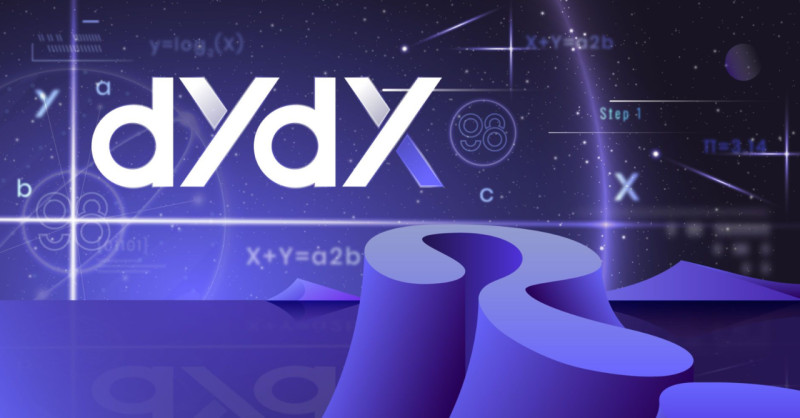
Let us list the most successful and profitable retroactive cryptocurrency airdrops in the history of the industry.
DYDX — this is a decentralized exchange that generously rewarded all of its users with tokens if they had ever conducted transactions on the platform. Moreover, the size of the reward directly depended on the total trading volume and ranged from USD 4,000 to USD 135,000.
Ethereum Name Service — this is a service that offered domain names with the “eth” extension based on the Ethereum network. The registration cost of a single address started from USD 30. As part of the token distribution, 25% was allocated to domain owners, which allowed each of them to receive the equivalent of USD 6,000.
Uniswap — users of this exchange were able to receive from USD 1,000 to USD 250,000 for any trading activity carried out before 1 September 2020. To be eligible for the reward, the platform’s client needed to perform one of the following actions:
- conduct at least one token swap
- provide liquidity for any period
- redeem a SOCKS token
- at the time of the snapshot, hold at least one SOCKS token
The size of the reward was determined based on the following criteria:
- 400 UNI were given to those who had interacted with the exchange’s contract at least once, including 12,000 addresses with failed transactions.
- 49 million UNI were allocated to liquidity providers, with the reward calculated according to the amount of time spent as an LP.
- 1,000 UNI were awarded to users who had either redeemed SOCKS tokens or owned at least one at the time of the snapshot.
Blur — users of this cryptocurrency platform for NFT trading received an average of USD 2,000 for their activity. The reward amount depended on the trading volume and did not have strict limitations.
Optimism — this is one of the largest retroactive airdrops. Rewards were granted for activity in both the Ethereum network and the Optimism network. As a result, 250,000 addresses received from USD 500 to USD 40,000.
Arbitrum — a recent example of a successful retroactive airdrop in which network users received from USD 300 to USD 3,000. Thanks to soft criteria and the absence of strict verification of links between wallets, almost anyone could receive a reward. This became possible due to Arbitrum’s new approach to bot filtering.
These examples demonstrate some of the most generous token distributions. However, the main difficulty for beginners in retro-hunting lies in predicting in time which project will decide to distribute its tokens. A mistake in this matter can be costly, since blockchain activity will always require you to pay transaction fees.
Before you start paying blockchain fees, always pay attention to the following points:
- It is more profitable to carry out operations in second-layer (L2) blockchains. In first-layer (L1) blockchains such as Ethereum, the fees will be significantly higher, which can seriously impact your wallet. For this reason, avoid activity on DEXs and NFT marketplaces in the Ethereum network.
Remember: when transferring funds through a bridge (for example, from Ethereum to L2), you will need to pay a considerable fee of approximately USD 10.
- If you plan to use multiple accounts (multi-accounting), it is important to ensure that there are no links between them in the network. Large projects have already learned how to detect multi-accounts and exclude them from the list of those who will receive rewards. This means that you should not transfer funds from one account to another and should not use the same address to receive tokens (for example, an exchange wallet).
Withdrawing funds from one exchange account is entirely acceptable, since projects can identify exchange wallets that send funds and do not consider them when detecting links between accounts.
Retroactive airdrops in 2024
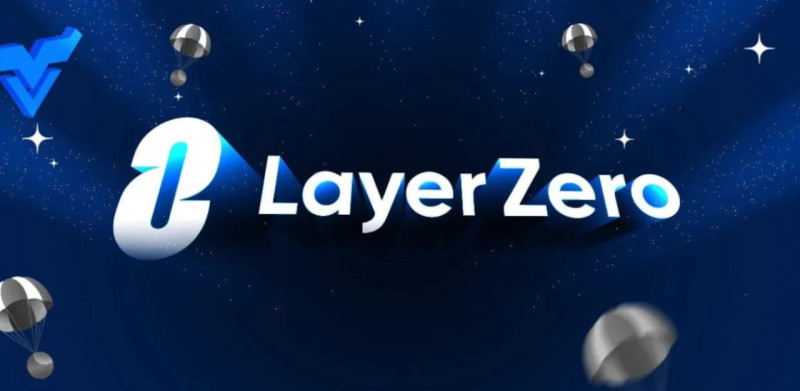
zkSync — a second-layer blockchain that uses Zero Knowledge (zk) technology, which has made it the most secure and highly scalable solution. This project has attracted over USD 450 million in funding for its development and continues to emphasize decentralization as the main theme of its existence. All of these factors suggest that the next retroactive airdrop is more than likely.
Possible criteria for receiving rewards:
- Use of the official bridge.
- Interaction with zk Lite.
- Transaction volume in zk Era and zk Lite networks.
- Interaction with 10/20/50/100 smart contracts.
- Activity for 3/6/9/12 months.
- Execution of 10/20/50/100 transactions in zk Era and zk Lite.
- Ownership of Libertas Omnibus.
- Possession of a Gitcoin Passport with 15/20 points.
LayerZero — a protocol for transferring assets between blockchains that has attracted over USD 260 million from leading funds. It is highly likely that the project will conduct a token distribution for early users.
Estimated criteria for receiving rewards:
- Use of the official bridge.
- Interaction with 3/5/10 recipient and sender blockchains.
- Volume of funds transferred through bridges.
- Activity for 3/6/9/12 months.
- Interaction with 3/5/10 bridges.
Scroll — a layer 2 blockchain for scaling Ethereum that has attracted USD 80 million. The reward criteria here may include active days, the number of transactions, and interaction with smart contracts.
Polyhedra — a cross-chain bridge that has received USD 25 million in funding, including support from Binance Labs. Thanks to its integration with LayerZero, by participating in Polyhedra, one can qualify for two retroactive airdrops.
Possible criteria for receiving rewards:
- Points for tasks in Galxe.
- Ownership of Pandra King.
- Volume of funds transferred through the bridge.
- Activity for 3/6/9/12 months.
- Number of blockchains engaged through the bridge.
Orbiter Finance — another cross-chain bridge supported by Vitalik Buterin. Although the amount of investment has not been disclosed, the project still promises to be promising.
Possible criteria for receiving rewards:
- Contributor role in Discord.
- Points for tasks on the official website and in Galxe, which can be converted into the project’s token.
Bungee — another cross-chain bridge useful for interaction between blockchains.
Possible criteria for receiving rewards:
- Volume of funds transferred through the bridge.
- Activity for 3/6/9/12 months.
- Number of blockchains engaged.
- Transactions through refuel.
Conclusion
A retroactive airdrop is not just a term but an entire concept in the cryptocurrency world. Retroactive cryptocurrency airdrops represent the distribution of tokens by projects to their loyal users, with the selection of users based on their past activity both on-chain and off-chain.
Since the specific criteria for retroactive airdrops are not disclosed in advance, we can only assume what may influence the receipt of rewards. Examples from the past and hints that projects sometimes leave in their social networks and on the Internet in general can help in this regard.
If you aim to become a successful drop hunter, always keep in mind that everyone has different opportunities, and you should adapt your chosen strategy to suit yourself.
When selecting a project, pay attention to those that have not yet issued a token but have reasons to believe they plan to do so. If it is also part of a larger project ecosystem, you may be able to qualify for two airdrops at the same time.
Always remember that it is worth starting regardless of the size of your deposit. Make more transactions and interact with protocols. If you do not have tokens to add to liquidity, do not hesitate to contribute even small amounts and connect additional protocols to your list.
Recommended
Insight into crypto trading
Crypto games
Insight into P2P platforms
Crypto in Telegram
Which crypto is poised for strong gains?
Altcoins in crypto market
Crypto for Steps









 Back to articles
Back to articles















